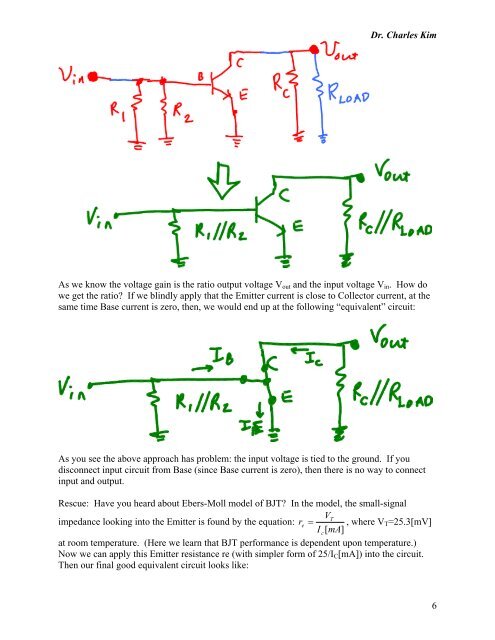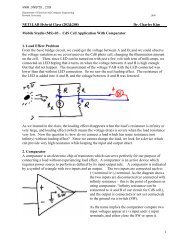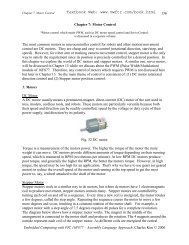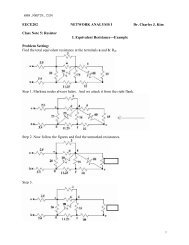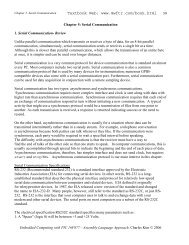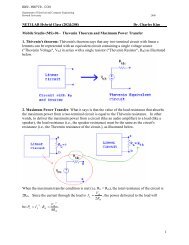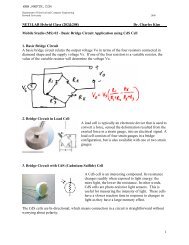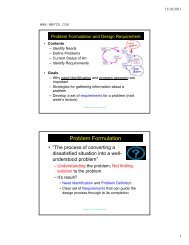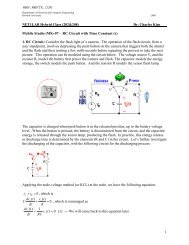Common-Emitter Amplifier - MWFTR
Common-Emitter Amplifier - MWFTR
Common-Emitter Amplifier - MWFTR
- No tags were found...
Create successful ePaper yourself
Turn your PDF publications into a flip-book with our unique Google optimized e-Paper software.
Dr. Charles KimAs we know the voltage gain is the ratio output voltage V out and the input voltage V in . How dowe get the ratio? If we blindly apply that the <strong>Emitter</strong> current is close to Collector current, at thesame time Base current is zero, then, we would end up at the following “equivalent” circuit:As you see the above approach has problem: the input voltage is tied to the ground. If youdisconnect input circuit from Base (since Base current is zero), then there is no way to connectinput and output.Rescue: Have you heard about Ebers-Moll model of BJT? In the model, the small-signalVimpedance looking into the <strong>Emitter</strong> is found by the equation: r = TeIc[mA], where V T=25.3[mV]at room temperature. (Here we learn that BJT performance is dependent upon temperature.)Now we can apply this <strong>Emitter</strong> resistance re (with simpler form of 25/I C [mA]) into the circuit.Then our final good equivalent circuit looks like:6


